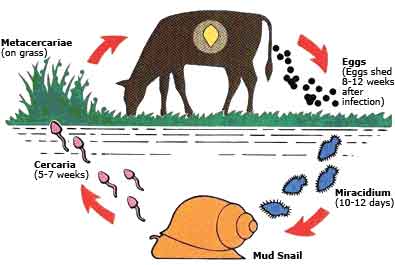
Parasite population differs considerably in various geographic zone. The many drugs can be combined to address the unique parasite challenge and treatment conditions of particular herd.
- Ectoparasite
- Edoparaside
- Blood protozoa
- Ectoparasite: Only 5% ectoparasite are found on body of cow and buffaloes rest 95% are found in cow shed. For application of animal shed with spray is important. You can use Butox which contains Deltamethrin 12.5 mg per ml. You can use this in spray. In tick and flee the dose is 2 ml/liter. For lice 1 ml/ liter. For mite 4 ml/ liter you should spray on every 14 days for 2 or 3 cycles. The Deltamethrin withdrawal period is zero. But it should not be sprayed when it is not raining. The animal should be dried in sun. Once it is dries it sticks on body and work for long time. It also controls mosquito, when mosquito bit animal it dies. So it is good for control of mosquito. It is work well for flies control in con 1/liter.
For cow and buffalo body tick, lice and ked Amitraz 125 mg/ml is available by name of Taktic 12.5% use 2ml/liter of water weekly for 2 or 3 week. Withdrawal period in 7 hour. If the use in proper concentration it works and you can get rid of ticks.
Our indigenous breed like sahiwal, Giri etc. are resident to ticks. Further they can shake their skin like horse so they can be free of flies and mosquito.
- If you will keep 5-6 guinea fowl with your cows, they will eat all external parasites.
- Use gloves and mask while use in any of medicine.
- Keep Atropine and Avil injection for poising.
- Young animals in hot climate may reacts, newly pregnant animal may abort.
- See withdrawal period before use.
- Do not use pesticide medicine at the time AI.
- Destroy the empty bottles.
- Parasite are carcinogenic, may cause cancer.
2. Endoparasites: With better control of endoparasites result a great gain from cow. The parasite population differs considerably in various geographic zones. There are many products that can be combined to address the unique parasite challenges and treatment conditions of particular herds few important points may be conceded for giving the treatment.
- Microscopic examination is good practice.
- Unnecessary deworming harms animals and causes environmental damage plus if milk is not discarded it will cause health hazard.
- Parasite is not active below 100 C and above 450 They flair up best at 300 C and 350 C in humidity environment.
- Fasciola the liver worm is quit preventing near pods river and marshy land. Because it intermediate host is snail. So if you keep duck in pond you can get rid of some problems.
- Biogas plant also solves parasitic problem. Because during fermentation at high temperature the egg of parasite are destroyed.
I am giving the practical deworming drugs.
- Fenbendazole it kills gastrointestinal nematodes lung worm and tapeworm. Its dose is 5mg/ kg body weight it is repeated after 20 days. It is available by name of Panacur and many other brands. It can be giving to pregnant animal and its withdrawal period is zero, it is repeated after 21 days.
- Oxyclozanide is drug of choice for fasciola, liver worm or liver fluke.
- It is given once before or after rains.
- It can be given to milking cows because the withdrawl time is Zero.
- It need not given after starvation.
- Dose is 10 to 15 mg per kg.
- It is also effective in paramphistomum.
- It can be given to pregnant cows and buffalo.
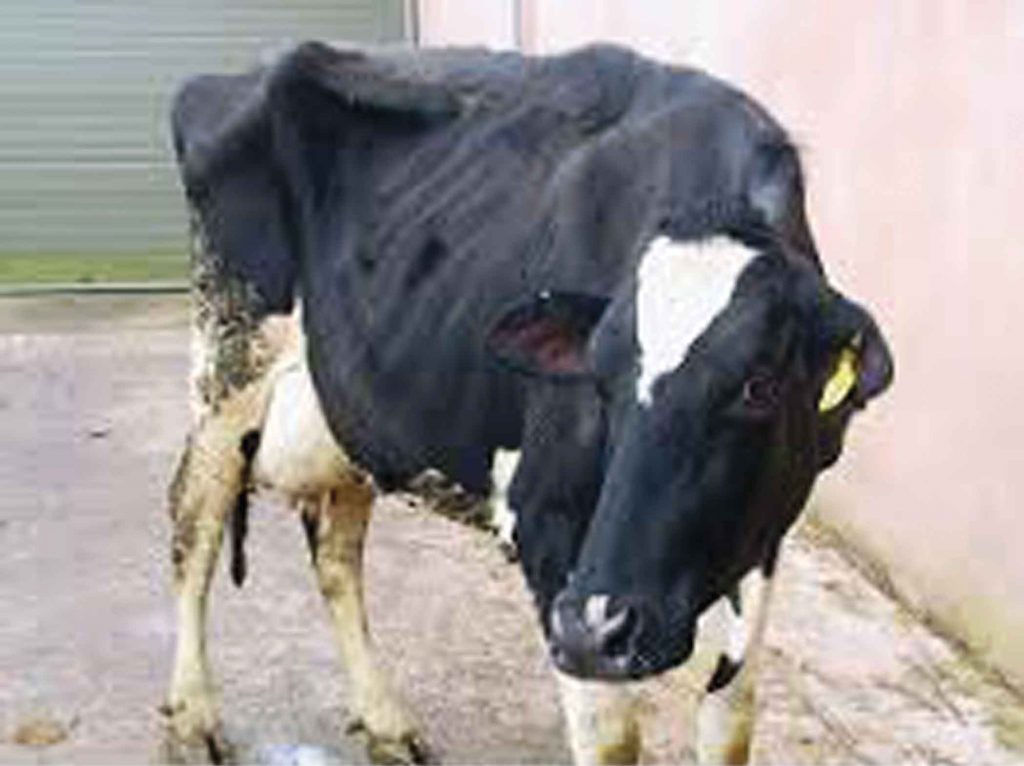
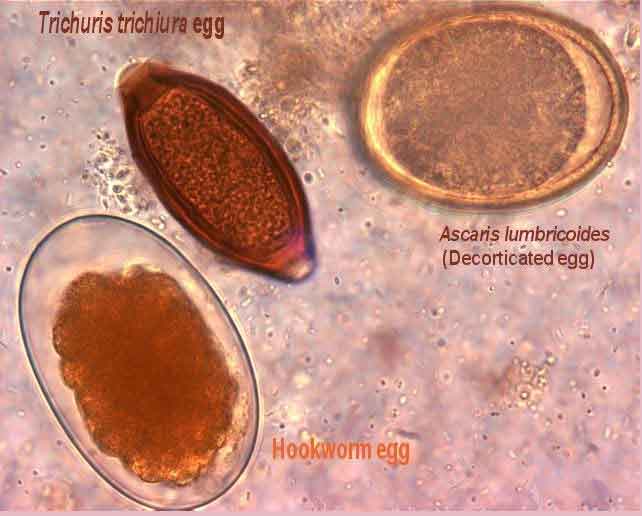
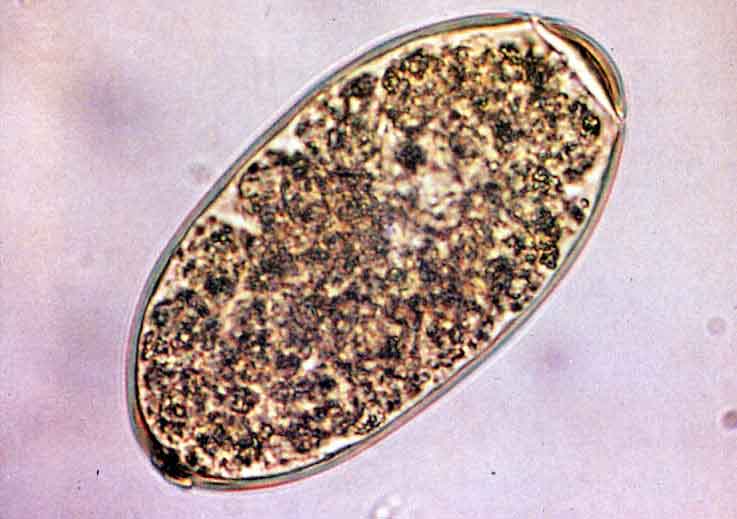
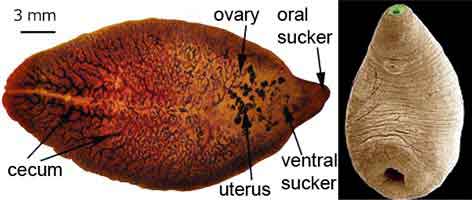
Roundworms in calf comes from pregnant mother blood. So pregnant cow should be dewormed at 5 and 7 month of pregnancy.
3. Blood protozoa: Two blood parasites A. Babesia
B. Theileria.
A. Babesia: This disease is also known as red water disease. Because the color of urine is red. The color of urine is also red in phosphorus deficiency. But in phosphorus deficiency there is no fever where as, in babasia there is high temperature. This disease can be treated by Berinile. It is curabile. It affects elder animal. It is spread by ticks. So, control of ticks can eradicate it. Its diagnosis is done microscopically. The microscopic slide is shown below.
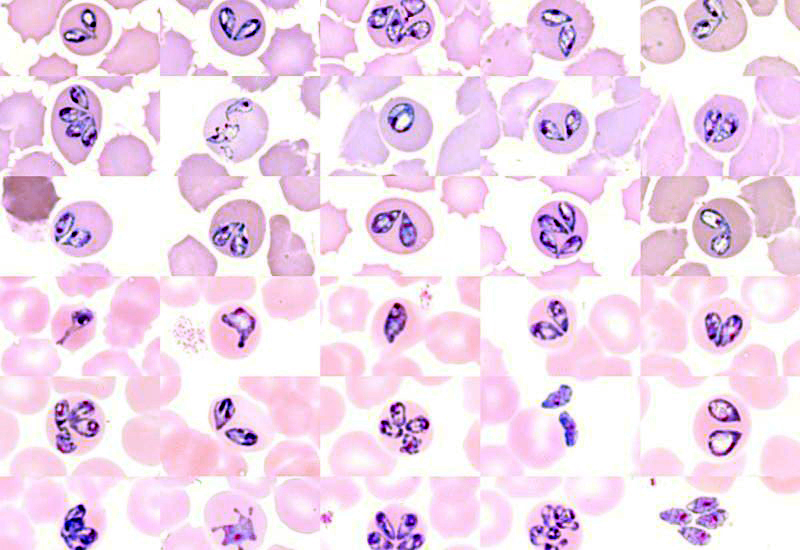
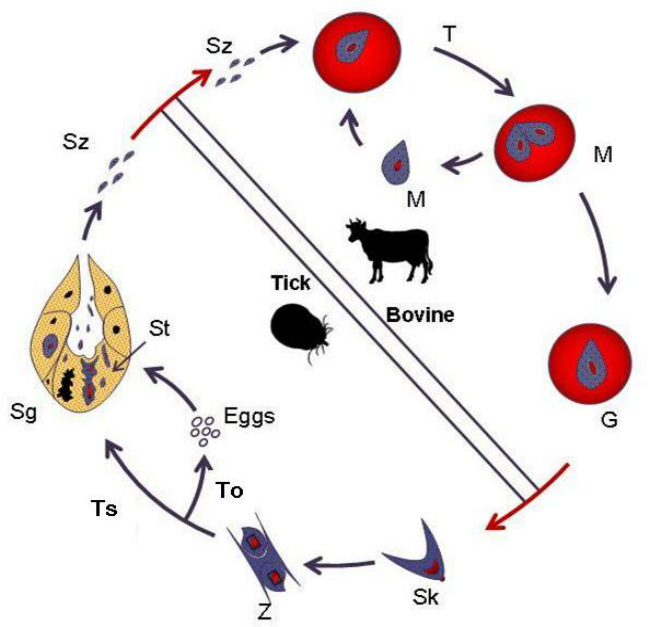
Life cycle of Babesia
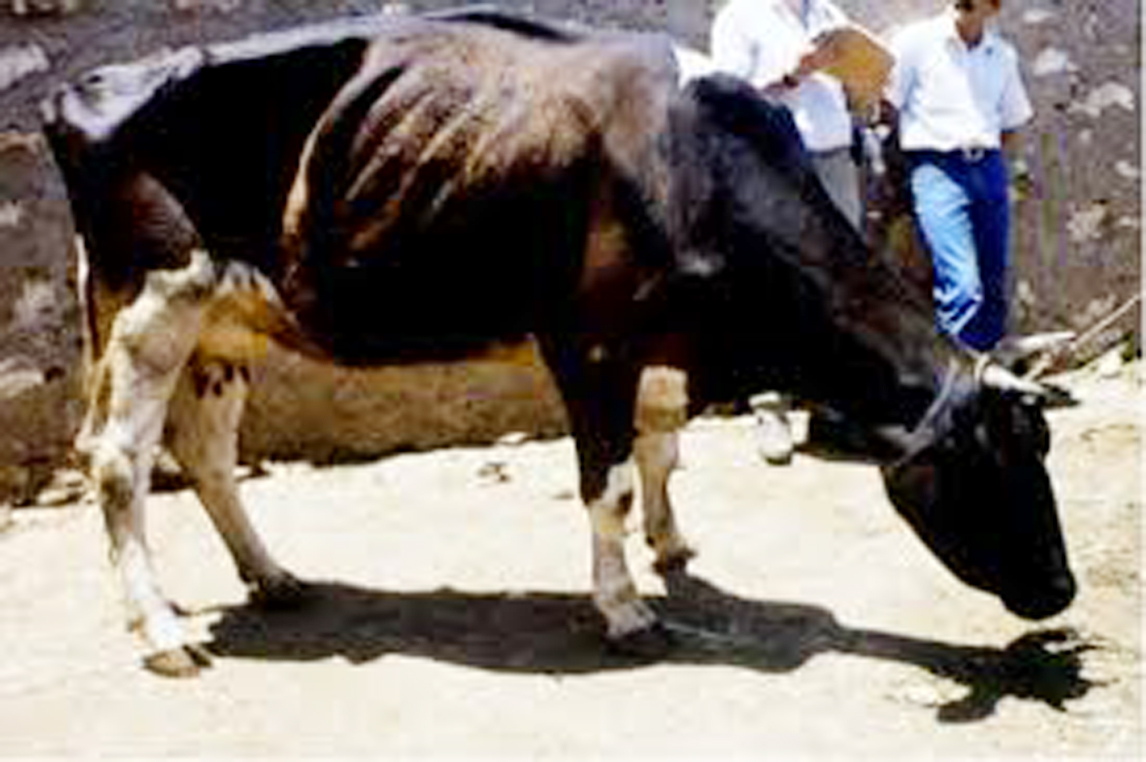
Cow suffering of Babesia
B. Theileria: This is a blood protozoan which causes heavy losses in exotic cows. This disease affects all ages of exotic cows. 90% of sick exotic cow die due to this disease. Our native cows in india are not affected by this disease. Terramycin has been the drug of choice for its treatment but with terramycin take long time and this does not give complete cure. Now the bruparvoquine is available and with this drug exotic cows are being treated. The diagnosis of this disease is microscopically. The microscopic slide is shown below.
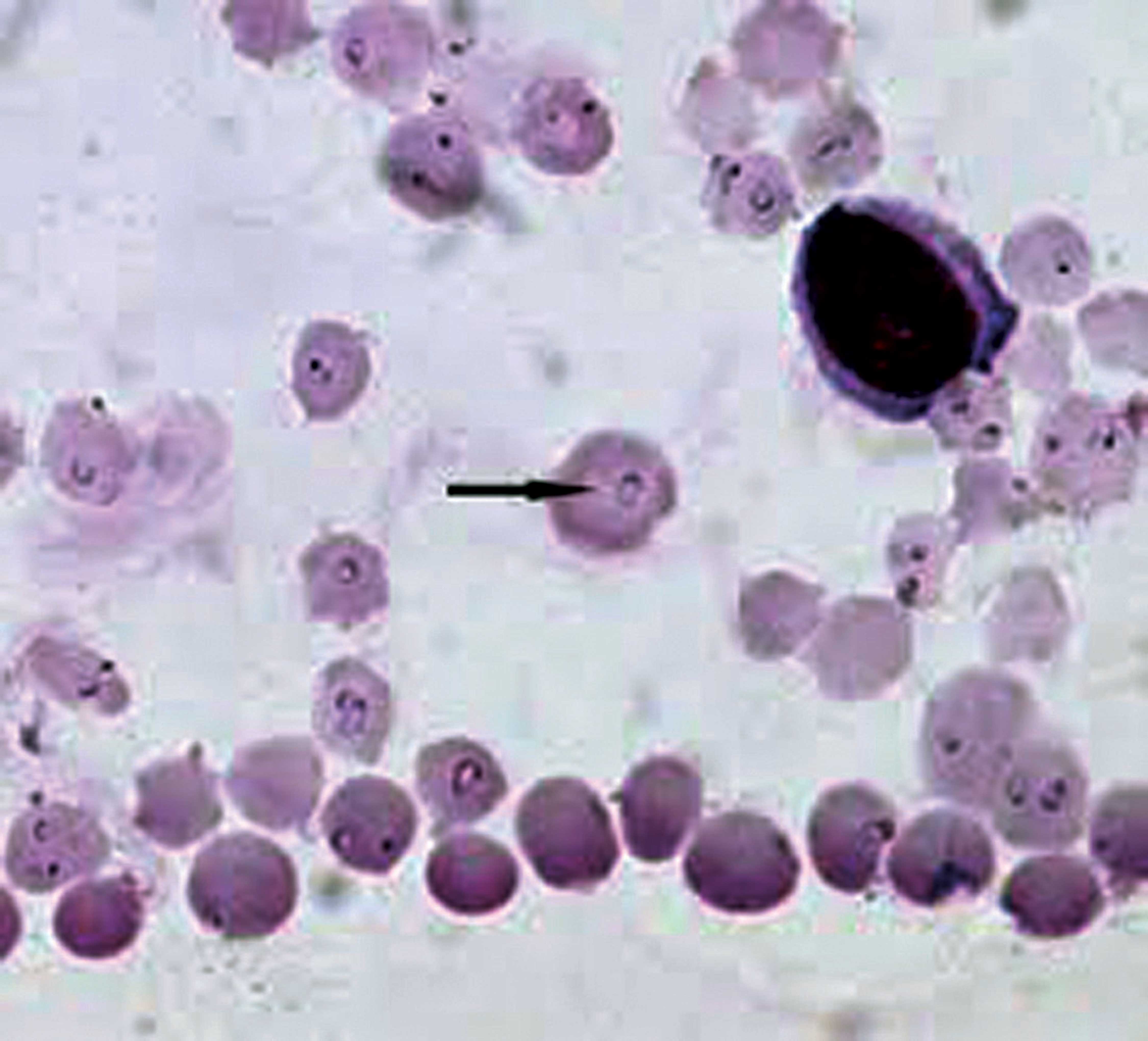
Slide of Theleria
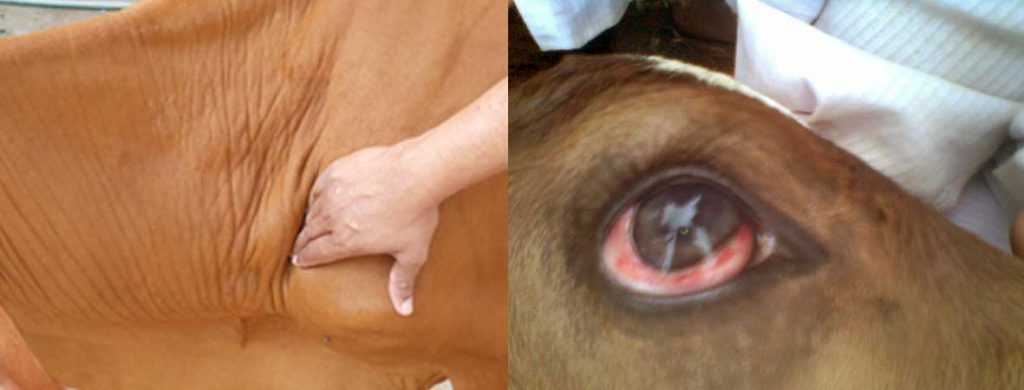
symptoms of Theileria (swelling of lymph gland and red eye) as shown above
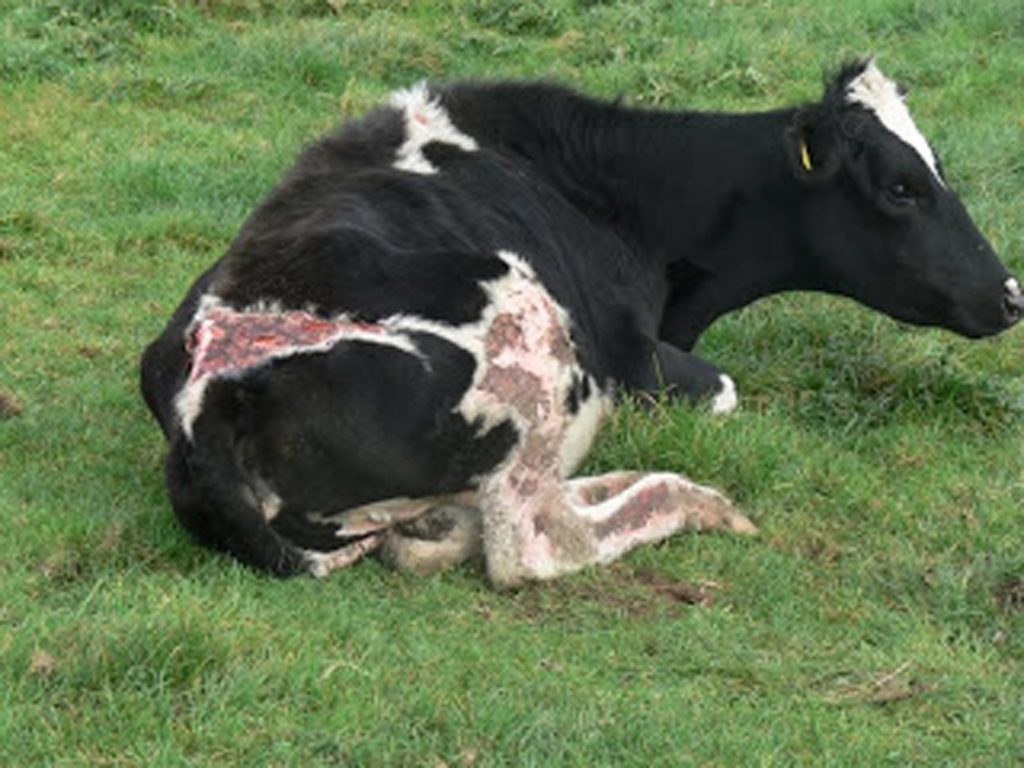
cow suffering of theileria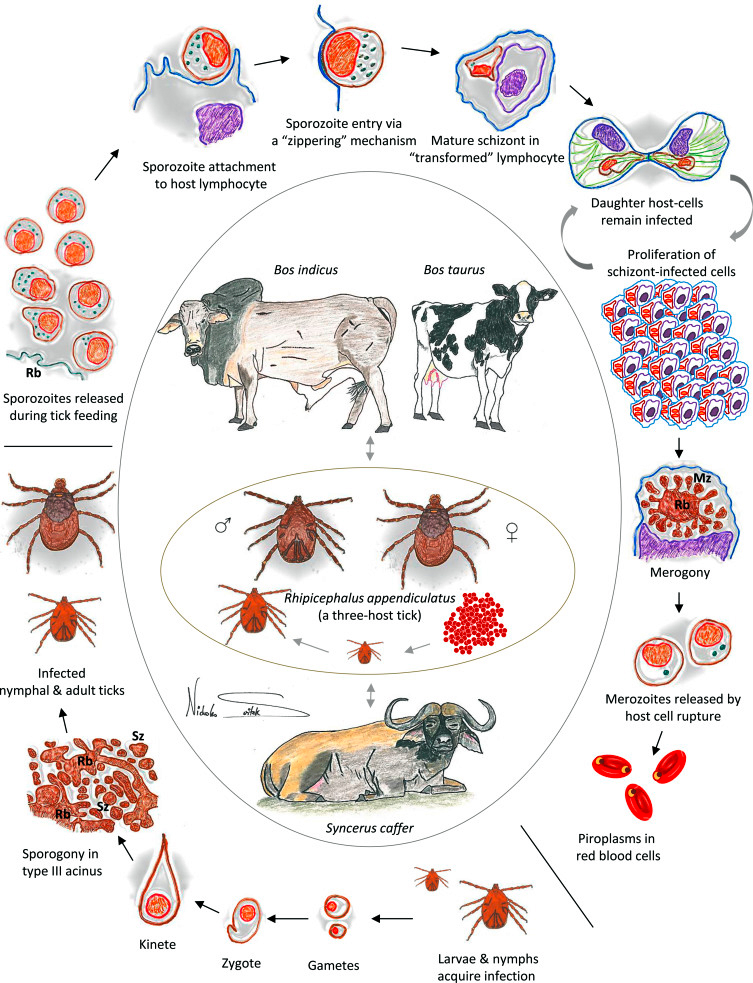
Life Cycle of Theileria
Teken from internet
As shown above in the life cycle this parasite resides in lymph glands. Thus it does not make animal sick but it affects production, reproduction and immunity. I have observed that latent cases of theileria does not allow treatment of metritis and repeat breeding. This can be controlled by the control of ticks. Now, its vaccination is available contact your veterinarian. For more information on Theileria and Babesia see ukatheya.com
Research Paper Published by U.K. Atheya.
Full Length Research Paper Outbreak of theileriosis and anaplasmosis in herd of holstein crossbred cows of Dehradun district of Uttranchal, India: A Himalyan region Shweta Kohli 1 , U. K. Atheya 2 *, S. K. Srivastava 3 , P. S. Banerjee 4 and Rajat Garg 4 1Graphic Era University, Dehradun, 566/6, Bell Road, Clement Town, Dehradun, Uttarakhand 248002, India. 2Department of Biotechnology, Graphic Era University, Dehradun, 566/6, Bell Road, Clement Town, Dehradun, Uttarakhand 248002, India. 3Division of Bacteriology, Indian Veterinary Research Institute, Izzatnagar, Bareilly, India. 4Division of Parasitology, Indian Veterinary Research Institute, Izzatnagar, Bareilly, India.
The theileriosis and anaplasmosis are not common in Himalayan region of India. However, this paper reports the outbreak of theileriosis and anaplasmosis in a herd of Holstein cross bred cows maintained at Graphic Era University Dehradun, Uttarakhand, India. This was because of introduction of native Red Sindhi cows. These native cows are in apparent carrier of theileria and anaplasmosis. Even with given treatment for theileria with Butalex (Buparvaquone) 4 positive cows and 4 calves died. One of the cows pregnant for 5 month aborted. That outbreak of theileria in the elite Holstein crossbred herd is reported in Himalayan region of India. Keywords: Theileria, blood protozoon’s, milk production, theileriosis, anaplasmosis.
INTRODUCTION: The native Red Sindhi cows in tropics are low milk producers but they do not suffer from heat stress and blood protozoan infections. However, the higher Holstein crosses produce over 5000 L of milk per lactation at well maintained dairy farms are prone to suffer blood protozoan diseases. The blood protozoan disease, bovine theileriosis, is one of the most dangerous diseases as it affects all ages of the cows. In India, bovine tropical theileriosis is an inapparent infection of indigenous cattle, but has emerged as one of the fatal diseases of crossbred cows since early 1960. The disease is present in entire Indian subcontinent. The infection was first reported in Central Provinces. During 1989, the study conducted by All India Coordinated Research project of Indian Council of Agriculture Research reported that out of 5454 blood smears of apparently normal crossbred cattle examined, 14.94% revealed presence of Theileria annulata. The result of serological survey conducted indicated that 30 to 60% of crossbred cattle were positive for antibodies to Theileria annulata piroplasms all over India, except in the Himalayan region. Devendra (1995) reported the annual loss of US $800 million due to tropical theileriosis in India. The present report describes the death of 4 Holstein cross bred cows and 4 calves along with severe drop in milk production due to Theileria annulata infection following the introduction of carrier Sindhi cows from Rajasthan in the month of May 2010 at Graphic Era University of Dehradun district of Uttarakhand, India, a Himalayan region.
